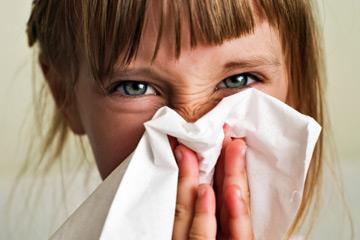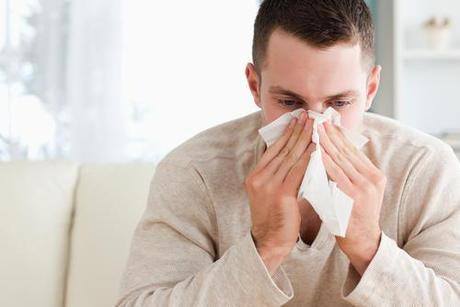Dust mite allergies cause inflammation of the nasal passages and may contribute to asthma, which may result in a number of symptoms.

Dust Allergy Symptoms
A common trigger for indoor allergies, dust mites can be found in the dust particles that collect naturally throughout the house. While dust mites are found throughout homes, they’re more prevalent in humid areas of the house. These microscopic creatures live off our dead skin cells, hiding within the fibers of pillows, mattresses, blankets, and carpets.
What Are Dust Mite Allergies?
Dust mites are tiny insects which are scientifically known as Dermatophagoides. These insects cause allergic reactions in susceptible humans, leading to hay fever, asthma and other respiratory symptoms. Dust mite allergy is easily the most common cause of year-round allergy and asthma in the United States. Millions of Americans have dust mite allergy. Dust mites are found in many areas of the world.
It is important to know that a positive allergy skin test to dust mite does not always mean that dust mites are a cause of your child’s symptoms. Only some of the children having a positive allergy test will have symptoms caused by the allergen. This is of the allergy test result for your child ought to be discussed with the doctor who referred you for that allergy test.
What Are The Symptoms Of Dust Mite Allergies?
Dust mite allergies cause inflammation of the nasal passages and could contribute to asthma, which may result in a quantity of symptoms. The symptoms can very in intensity among individuals and could occur daily or less frequently. However, anytime the asthma symptoms may become severe. Dust mite allergy symptoms may vary from mild to severe and could include the following:
Sneezing
If a person is allergic to dust, he/she will begin sneezing as soon as the body registers the presence of a dust allergen. Sneezes as a result of dust allergy are persistent, uncontrollable and uninterrupted. The patient is affected with long, continuous and severe bouts of sneezing. This is actually the body’s way to get rid of the allergen that caused the dust allergy.
Itching
Contact with an allergen, such as dust, frequently causes itching in which the dust came into contact with your body. Itching in your eyes develops after kicking up dust during activities, like cleaning or walking with an infrequently used or dirty space, just like a barn or attic. Breathing in dust causes your nose, the roof of your mouth and throat to itch and can cause you to feel as if you have a scratchy throat. Children with allergies to dust or dust mites often rub or scratch upward on their own noses.
Runny Nose/Congestion In The Nose
If a person is allergic to dust, he might experience inflammation of the membranes and tissue that line the interior passages of the nasal bone and also the sinus cavity. The inflammation will either result in congestion of the airway passage or perhaps a runny nose. Pressure on the sinus cavity can cause extreme pain within the head, eye, teeth or ears. Most of the time, a nasal congestion or perhaps a runny nose are the earliest symptoms of a dust allergy. Other symptoms might follow later.
Irritation Of Eyes/Watery Eyes
Reaction of the eyes to dust allergens can also be known as ‘allergic conjunctivitis’. It is characterized by inflammation of the conjunctiva, which is the mucous membrane of the eyeball. The soreness is an allergic reaction to dust and causes swelling, redness, watery discharge, pain, and extreme discomfort within the eyes.
Disrupted Sleep
Certain sleep problems are symptoms of allergies to dust or dust mites that inhabit your linens and bed. Difficulty breathing and frequent coughing attacks brought on by dust allergies make it hard to fall asleep. Coughing, difficulty breathing and wheezing also cause frequent awakenings during the night time. Swelling or dark circles under your eyes when you wake up are another symptom dust allergies, due to prolonged exposure when you are in bed.
Sore Throat
This is a secondary symptom noticed in patients allergic to dust. A sore throat is not a direct response to dust allergens and can be a result of constant coughing and sneezing. Uninterrupted bouts of sneezes and cough exert pressure around the throat, making it sore and swollen.
Postnasal Drip
Another symptom of the dust allergy is postnasal drip. In this condition, there is excessive accumulation of mucus behind of the throat. This gives a feeling of mucus dripping out of the back of the nose into the throat.
Coughing
Breathing in air which contains dust mites, pollen, mold, and other dust allergens will cause you aren’t a dust allergy to start coughing up instantly. The allergy cough itself may not be harmful, but it can lead to other severe symptoms like constant awakening from sleep, heavy, and disrupted breathing, and asthma attacks.
Hives
The medical term for hives is urticaria. Hives are understood to be itchy skin eruptions with pale interiors and well-defined red margins. You aren’t dust allergy may develop hives when he/she comes in contact with dust allergens.

Dust Allergy Symptoms
Asthma
People with dust allergies and asthma often experience start of asthma symptoms as a result of exposure to dust. Dust is a common trigger of asthma symptoms, including wheezing and coughing, as well as tightness in your chest muscles and difficulty breathing. Frequent exposure to dust mites is a common cause of asthma symptoms in children.
Fatigue
In some cases, extreme tiredness, headaches, and fatigue can be symptoms of the oncoming allergy episode. The person might find it hard to concentrate. The fatigue related to dust allergy is usually of chronic nature.
